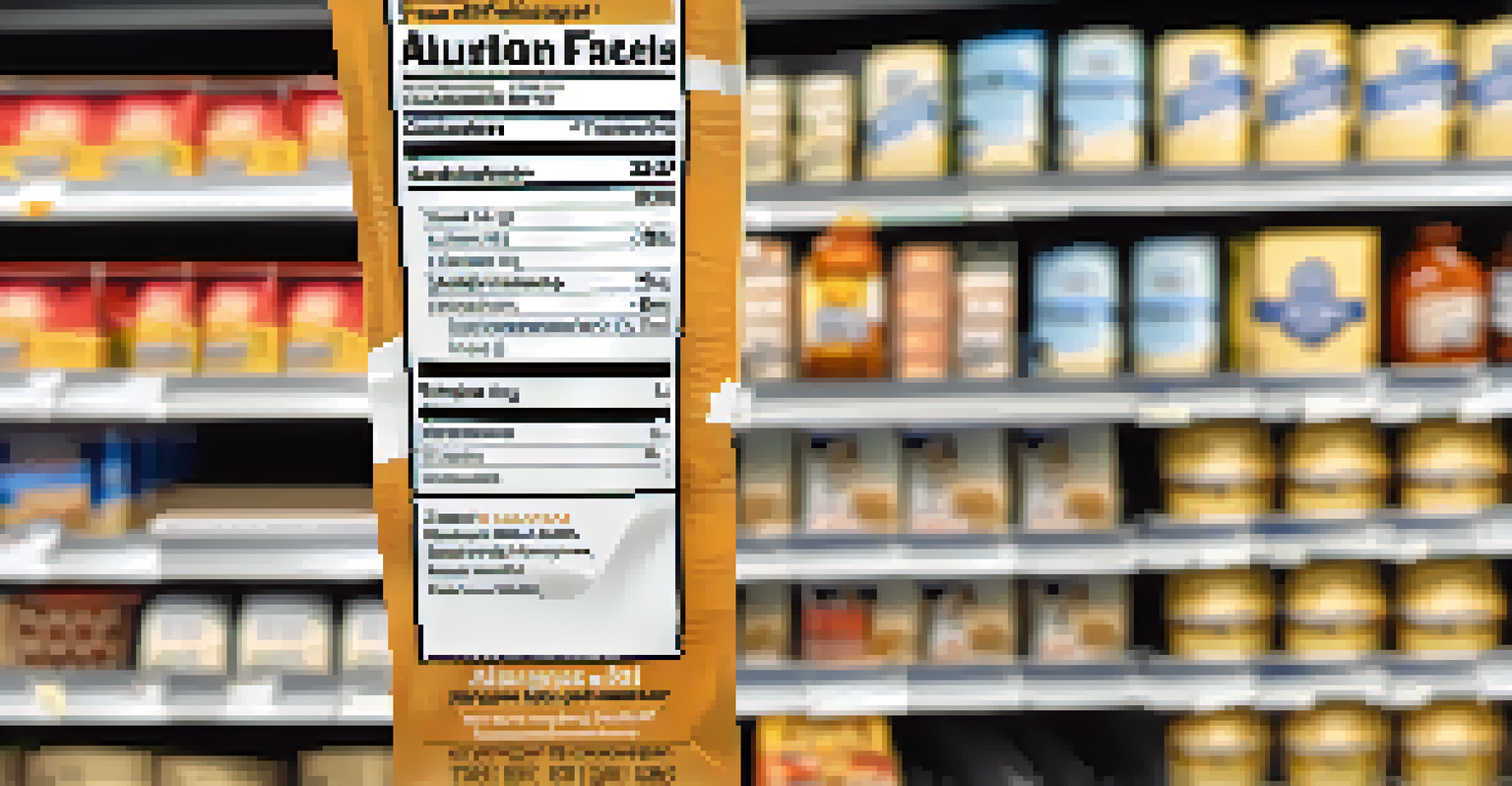Understanding Food Allergies and Preventive Nutrition

What Are Food Allergies and How Do They Develop?
Food allergies occur when the immune system mistakenly identifies a harmless food protein as a threat. This can trigger a range of reactions, from mild symptoms like hives to severe anaphylaxis. The underlying cause often involves genetic and environmental factors, where some individuals may inherit a predisposition to allergies.
Food allergies are not just a nuisance; they are a serious health concern that can impact daily life.
Common allergens include peanuts, tree nuts, milk, eggs, soy, wheat, fish, and shellfish. Interestingly, while some children outgrow certain allergies, others can persist into adulthood. Understanding this can help families navigate food choices and minimize risks.
It’s essential to differentiate between food allergies and food intolerances, which are often confused. While allergies involve the immune system, intolerances relate to digestive issues. This distinction helps individuals manage their diets more effectively.
Recognizing Symptoms of Food Allergies
Symptoms of food allergies can vary widely and may show up minutes after exposure. Common signs include itching, swelling, stomach cramps, or difficulty breathing. Recognizing these early warning signs can be lifesaving, especially in severe cases where anaphylaxis may occur.

Some individuals may experience delayed reactions, making it harder to pinpoint the trigger. Keeping a food diary can be a helpful strategy to track what you eat and any symptoms that follow. This can assist healthcare professionals in diagnosing allergies accurately.
Understanding Food Allergies
Food allergies occur when the immune system mistakenly identifies harmless food proteins as threats, leading to various symptoms and potential anaphylaxis.
If you suspect a food allergy, it’s crucial to consult with a healthcare provider. They can conduct specific tests and help establish a management plan that best fits your lifestyle. Quick action can make a world of difference in managing food allergies.
The Role of Preventive Nutrition in Allergy Management
Preventive nutrition involves making dietary choices that can potentially reduce the risk of developing food allergies. For instance, introducing allergenic foods at the right time during an infant's development may help build tolerance. This approach is gaining traction in pediatric nutrition recommendations.
The best way to predict the future is to create it, especially when it comes to managing food allergies and making informed choices.
Incorporating a diverse range of foods early can expose the immune system to different proteins, potentially reducing the risk of allergies. However, consulting with a pediatrician or nutritionist is essential to create a tailored feeding plan that aligns with individual needs.
Furthermore, maintaining a balanced diet rich in vitamins and minerals strengthens the immune system. Foods like fruits, vegetables, whole grains, and healthy fats can support overall health, making it easier for the body to manage allergens.
Creating an Allergen-Free Kitchen Environment
For families managing food allergies, creating an allergen-free kitchen is critical. This involves labeling and organizing food items, ensuring that allergens are stored separately from safe foods. Clear labeling helps prevent accidental exposure, especially when cooking for multiple people.
It’s also beneficial to educate everyone in the household about food allergies. Teaching children about the importance of checking labels and understanding their dietary restrictions fosters a team approach to safety. This can significantly reduce anxiety around meal times.
Emergency Preparedness is Key
Having an emergency action plan, including the use of an epinephrine auto-injector, is crucial for managing allergic reactions effectively.
Lastly, consider alternative ingredients in your recipes. Many delicious substitutes can replace common allergens, allowing everyone to enjoy meals together. For instance, almond milk can often replace cow's milk, and flaxseed can substitute for eggs in baking.
Label Reading: Understanding Food Packaging
Label reading is an essential skill for anyone managing food allergies. The Food Allergen Labeling and Consumer Protection Act requires that major allergens be clearly identified on packaging. This means you should always check ingredient lists, even for familiar products, as recipes can change.
Look for terms like 'may contain' or 'processed in a facility that handles' allergens, as these can indicate a risk of cross-contamination. Understanding these terms can help you make safer choices when shopping.
Additionally, it’s wise to familiarize yourself with food industry practices, as some companies may not disclose all potential allergens. When in doubt, reaching out to manufacturers directly can clarify any uncertainties about their products.
Emergency Preparedness for Allergic Reactions
Being prepared for an allergic reaction is crucial for anyone at risk. This means having an emergency action plan in place, which should include knowing how to use an epinephrine auto-injector. Training friends and family on how to act in an emergency can also provide peace of mind.
Always carry emergency medications and ensure they are accessible at all times, whether at home or out. Consider wearing a medical alert bracelet that identifies your allergies, which can be invaluable in emergencies when you may not be able to communicate.
Importance of Professional Guidance
Consulting with healthcare professionals like allergists and dietitians can provide personalized strategies for managing food allergies.
Educating yourself about the signs of severe reactions and understanding when to seek medical help is essential. Knowledge and preparedness can empower individuals to navigate their environments safely.
Consulting with Professionals for Personalized Guidance
Navigating food allergies can be overwhelming, but you don’t have to do it alone. Consulting with allergists, dietitians, or nutritionists can offer personalized strategies tailored to your needs. They can help you identify triggers, plan safe meals, and ensure your nutritional needs are met.
Moreover, joining support groups can connect you with others facing similar challenges. Sharing experiences and tips can provide emotional support and practical advice, making the journey a bit easier.

Remember, your health and well-being are paramount, so don’t hesitate to seek professional help when needed. The right guidance can lead to an empowered approach to managing food allergies.